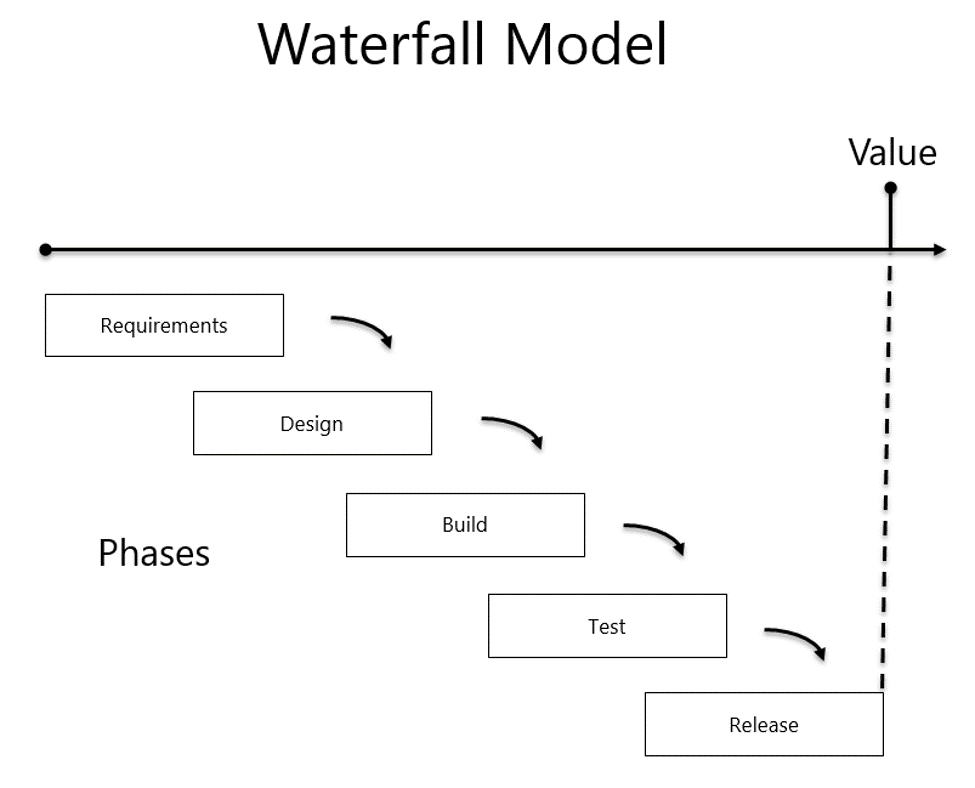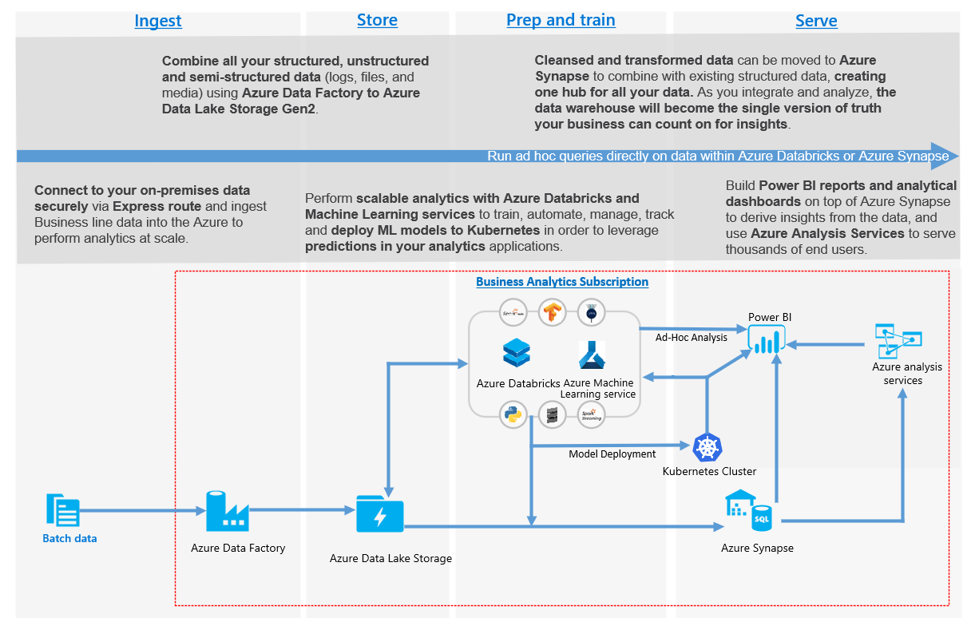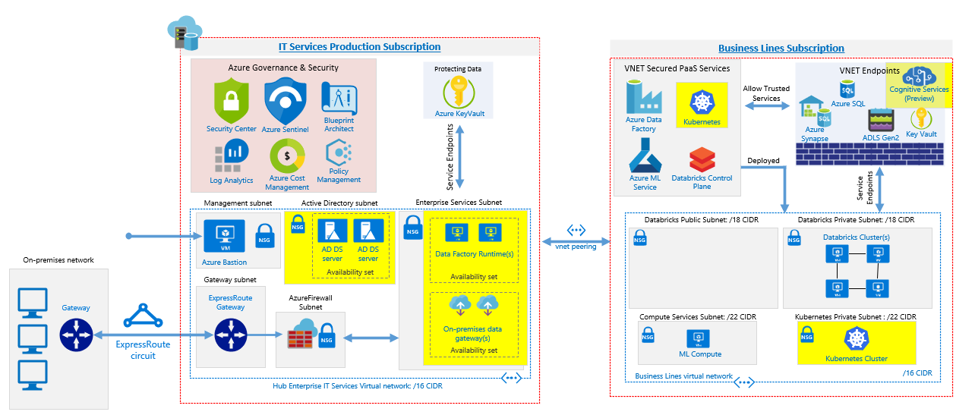The journey to a data driven business
Among the growing impulses which organizations use to decide to adopt the cloud, is the strive to become a data-driven business. A data-driven business is an organization that has come to the realization that decisions motivated by facts produce better outcomes than decisions driven by predisposition.
“The drive to the cloud has not always been IT lead”
Unfortunately, the ambition to achieve data-driven decision making has been problematic for IT and businesses as traditional approaches to IT infrastructure and services can’t keep stride with the fast-paced world of business analytics. Consequently, we’ve seen a shift to the cloud. However, in our experience, the drive to the cloud has not always been IT-led, it’s the business that is driving cloud adoption; specifically, in the journey to advanced business analytics.
Any tech-savvy business user can deploy AI services, databases, big data clusters and machine learning services at the click of a button and without a thought about an architectural design document, change processes or security. Business results don’t have time to wait for IT to jump from conceptual to tangible, and IT can’t deploy environments efficiently on-premises.
What’s the result?
-
Shadow IT
-
Lack of Governance & Security
-
Discord between business and IT
Or, in a mad dash to facilitate business needs:
-
Money spent on solutions that may not even produce an ROI
This is the nature of business-led analytics, not all results are created equal and time to failure is just as important as time to insight.
Why can’t IT keep pace?
Let’s look at a typical design cycle and traditional project approach for a new platform or architecture.

In the design phase alone, we spend weeks to months planning out the technology and document in a system design. Answering questions like what size disks do we need, how many IOPS, how much RAM, Cores, what level of auditing is required, what’s our log retention, etc. This is probably followed by a lengthy review process and many iterations on that document until all have agreed that security, governance and the solution have met stakeholders needs. Let’s call the deliverable of the design phase an approved ‘blueprint'.
Traditionally, a blueprint is defined as a copy of a building or engineering plan, reproduced with white lines on a blue background, or detailed plan of action. An example of a blueprint is a construction worker's diagram of building plans for a new home.

In the world of technology, architectural diagrams and blueprints have been around for ages. We’ve all seen them in lengthy system design documents that include network diagrams, data flows, port openings, deployment architectures, etc. Blueprints are essential components of an Enterprise Architecture strategy execution. The lack of an engineering plan does not only decrease the effectiveness of your Enterprise Architecture, but also makes it extremely difficult to manage and increases your security risk footprint. But in the end, aren’t these just documents describing the desired state? Speaking from experience, both in technology and construction (having built my own house), from the business’s perspective, these documented blueprints don’t produce anything tangible. Or take it from a homeowner’s perspective, “great we have a picture of our house, when can we move in?” .... ”Umm between 18 months and 2 years, maybe.”
At this point, several teams, including Networking, Infrastructure, Security, database and business units have put a lot of quality work into planning what your environment should be but there’s still months of work to be done before the business will see any value.
And beyond that:
- Is the delivery repeatable?
- Can you provision many environments for many business lines efficiently?
- If you could, are you certain each environment has been created with the same governance and security guardrails in place?
- What about new technology, how can you allow business lines to explore new tech without worrying about security and unnecessary expenses?
- Can you iterate on the design for new services or security enhancements quickly?
Business decisions don’t wait, they crave analytical solutions and immediate gratification. As we delineated above, technology doesn’t wait anymore, either. Business lines can move forward without IT.
Solution-based Blueprints for quick, repeatable and fully governed cloud solutions
Our solution? Azure Blueprints! ‘Functional’, I repeat, ‘functional’ engineering plans for quick, repeatable creation of fully governed cloud solutions.
“Deployment efficiency and business-led innovation meets governance and design.”
It’s like a design of your home programmed into robots that can build it repeatably, to your exact specifications, in 30 minutes or less, and as many times as you want. Change your design? Reload and the robots add/remove a window in minutes without a scratch in your paint job or furnishings. Don’t want the house, delete!
Azure Blueprints are a declarative way to orchestrate the deployment of Azure resources and other objects such as:
- Role Assignments which provide granular identity management to resources
- Policy Assignments which audit and enforce policies within your cloud environment
- Azure Resource Manager templates that define and deploy a consistent set of resources
- Resource Groups to organize your resources into logical segmented lists for a plug and play architecture and easier management
Azure Blueprints enabled our architects to define a solution-based set of Azure resources that implements and adheres to cloud adoption best practices, security standards, architectural patterns, and solution requirements. Our team recently engaged with a customer and built a set of robust Blueprints, one of which, engineers the business analytics solution below; fully governed and repeatable in minutes. The blueprints approach significantly reduced the overhead of deploying an analytics architecture across multiple business lines. The business could focus on managing their business processes and analytical outputs while IT could provision secure resources efficiently without worrying about shadow IT.
Logical Architecture Diagram- Business Analytics Blueprint
Azure Architecture Diagram- Set of Blueprints (Security, IT Services HUB, Business Analytics)
With our growing library of solution based Azure Blueprints we’ve unlocked the ability for our clients’ to realize the value of Azure. For good measure, it can also be your gateway to agile IT infrastructure.
Interested in learning more or have any questions? Contact us today!



